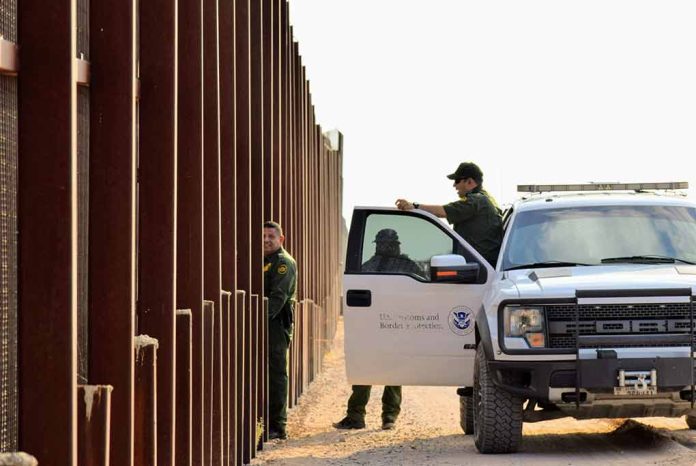
President Trump’s emergency declaration on the northern border is spurring a high-tech revolution in security as agents deploy 3D-printed fake trees with hidden cameras to combat terrorists and smugglers crossing from Canada.
Key Takeaways
- The nearly 4,000-mile U.S.-Canada border lacks a physical wall but relies on advanced technology like drones, sensors, and camouflaged cameras for security
- Border Patrol is using innovative solutions including “BuckEye” cameras disguised as tree bark and cement blocks to prevent vehicle smuggling
- A significant number of individuals on the FBI terrorism watch list have been intercepted at the Canadian border, highlighting critical security concerns
- Border agents face challenges including harsh weather conditions, remote areas without cell service, and limited personnel to monitor the vast territory
Trump’s Emergency Declaration Highlights Northern Border Crisis
President Trump’s state of emergency declaration for the northern U.S.-Canada border has drawn attention to the unique security challenges faced along the nearly 4,000-mile boundary. Unlike the southern border, the northern frontier lacks a physical wall but faces serious threats from human smuggling and drug trafficking operations. The vastness of this border, coupled with harsh environmental conditions and remote terrain, creates a security challenge that requires innovative solutions beyond traditional barriers. Border Patrol agents are increasingly turning to technological solutions to overcome these obstacles and maintain effective surveillance.
“There are parts where, look, a wall isn’t going to stop people. What it does is slows them down so that the Border Protection can get time to get to people and find people that might actually be committing crimes or trafficking either people. It’s a little trickier with the weather conditions and also with these waterways” Stated Claudia Tenney
Innovative Technology Replacing Traditional Barriers
Federal law enforcement has embraced a comprehensive technological approach to secure the northern border. This includes deploying drones for aerial surveillance, ground sensors to detect movement, infrared cameras for nighttime monitoring, and long-range cameras to observe vast areas. In particularly vulnerable locations, Border Patrol has implemented physical barriers such as cement blocks to prevent vehicle smuggling. However, the most fascinating developments involve camouflaged surveillance systems that blend seamlessly into the natural environment, providing covert monitoring capabilities without disrupting the landscape or legitimate cross-border activities.
“As far as Americans having faith in what we’re doing, we are now using 3D printing machines. We’re printing fake trees that have cameras. There is some really cool stuff going on” Stated Raymond Bresnahan
Challenges in Implementation and Operation
Despite the advantages of high-tech solutions, Border Patrol agents face significant challenges in implementing and maintaining these systems. The harsh northern climate can damage sensitive electronic equipment, requiring specialized technology that can withstand extreme conditions. Remote areas often lack cellular service, rendering some video monitoring systems ineffective without additional infrastructure. Agents need better communication tools, including repeaters and satellite capabilities, to maintain contact in isolated regions. Additionally, current detection systems struggle to differentiate between animals and humans, creating false alarms that drain limited resources.
“This technology also has to be developed in a way that they can withstand the harsh temperatures and the harsh environments that we see on the northern border” Stated Scott Good
Terrorism Threats and International Cooperation
A critical aspect of northern border security involves intercepting potential terrorists attempting to enter the United States from Canada. Customs and Border Protection officials emphasize the importance of cross-border information sharing with Canadian authorities to identify and apprehend these individuals. The threat is substantial—a significant number of people on the FBI terrorism watch list have been caught at the Canadian border. Recognizing these challenges, the Canadian government has invested $1.3 billion in border security and immigration tools, creating a more unified approach to addressing common threats.
Future Investments and Strategic Priorities
The White House is seeking to enhance border security through new technology investments included in a pending budget reconciliation bill. This approach acknowledges that traditional physical barriers alone cannot address the complex security challenges at the northern border. Instead, a flexible, adaptive strategy that combines targeted physical measures with advanced surveillance technology offers the most effective solution. This strategy ensures enhanced detection of illicit activities while maintaining the flow of legitimate commerce and travel, striking a balance between security imperatives and economic interests that benefit both countries.













